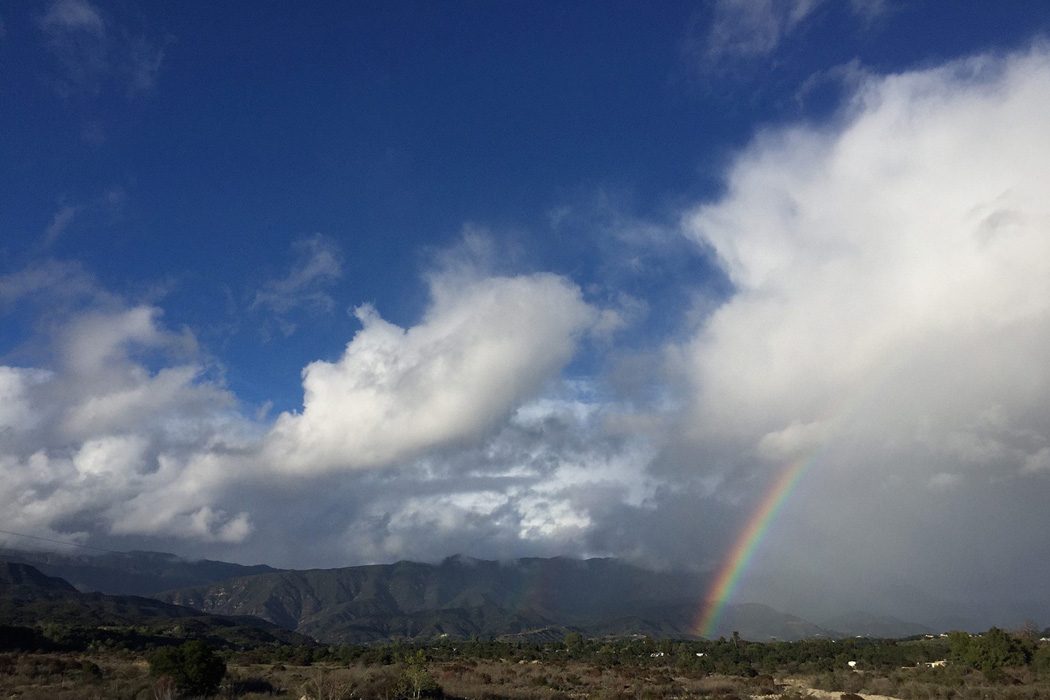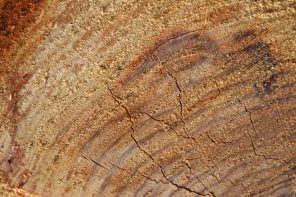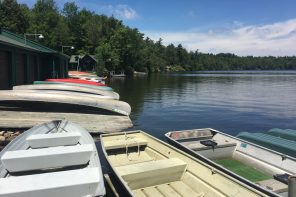Editor’s Note: The following is an excerpt of a larger essay titled, “A Reflection on Isaiah 5, Ecological Solipsism, and ‘Watershed Discipleship’,” which appeared in the July 2010 edition of Partner’s Circle E-news, a publication of Bartimaeus Cooperative Ministries. For more on these subjects, see Ched Myers’ introductory essay in Watershed Discipleship: Reinhabiting Bioregional Faith and Practice (Cascade Books, 2016). Most of Ched’s publications can be found at www.ChedMyers.org. The accompanying photo was taken by Tim Nafzger in the Ventura River watershed.
I learned an interesting term from a Canadian regional planner who attended one of my recent workshops. “Glenn Albrecht coined the term “solastalgia” or “the pain experienced when there is recognition that the place where one resides and that one loves is under immediate assault,” he explained. It is “a form of homesickness one gets when one is still home” (George McKibbon, “Looking for a Cure for Solastalgia,” Ontario Planning Journal, March-April 2010).
As a fifth generation Californian, I know solastalgia all too well. The spectacular but fragile chapparal and oak savannah landscapes of southern California are etched into my soul. Yet I have seen too much of the land I love relentlessly bulldozed, paved over, and disfigured into condominiums. This place has been systematically destroyed and mercilessly exploited by resorts, suburban tracts, boutique wineries, trophy homes, golf courses, military-industrial complexes and all other manner of “development”—most of which has been spearheaded by transplanted people in pursuit of a fantasy and/or corporate interests in search of quick profit. It has been one of the great, continuing sadnesses of my life. Homesick in my homeplace, I am learning to focus my fierce grief and rage into the constructive work of learning, healing, and tending my home place.
I believe the most important theological and practical journey of our time is to reclaim and restore our sense of place in and on the land. The dominant culture of urban modernity in which most of us were raised is one characterized fundamentally by displacement and alienation from land and place. Mobility has trumped roots for most non-indigenous North Americans. Indeed, capitalism promotes “exotic” lifestyles: patterns of domestic life, work, and leisure which are “not native, naturalized or acclimatized” to their place. Los Angeles is a perfect example. The atmosphere of our coastal desert basins cannot bear the pollutants of the millions of cars we use. Virtually none of the land’s indigenous natural resources are used in local economic production. And the water table could not support even 5% of our current population. This metropolis was built upon import and theft—of water, flora, human labor, electrical power, and so on. The consequences of mismanagement and depletion of this land have finally caught up with us, and the result is an environmental crisis that is as profoundly local as it is global.
Christian theology is just beginning to address our crisis of alienation from the land we live on. Liberal theology has tended to celebrate the “secular city” and its built environments, while conservative theology has sought refuge in interiority. It turns out that both tendencies were merely symptoms of modernity. Until recently, prophetic advocacy on behalf of the land was left to the environmental movement, a few rural organizers, and First Nations peoples. The church is a legitimate target for blame for our alienation, if an easy one. But the real culprit is global capitalism itself, which demands the objectification and commodification of nature in ways that ancient Judeo-Christian tradition simply never could have. Christianity was surely complicit in the ascendancy of capitalism, but it has also been one of its victims.
Kentucky farmer Wendell Berry is the foremost Christian voice addressing placelessness in North America. Berry summarizes our dilemma in a 1987 essay titled “Higher Education and Home Defense”:
A powerful class of itinerant professional vandals is now pillaging the country and laying it waste. Their vandalism is not called by that name because of its enormous profitability (to some) and the grandeur of its scale. If one wrecks a private home, that is vandalism, but if, to build a nuclear power plant, one destroys good farmland, disrupts local community, and jeopardizes lives, home and properties within an area of several thousand square miles, that is industrial progress. The members of this prestigious class of rampaging professionals are the purest sort of careerists—”upwardly mobile” transients who will permit no stay or place to interrupt their personal advance. They must have no local allegiances; they must not have a local point of view. In order to be able to desecrate, endanger, or destroy a place, after all, one must be able to leave it and to forget it. One must never think of any place as one’s home; one must never think of any place as anyone else’s home.
But how do we stand against such robbery if we have no place to stand?
Berry argues that “no place on the earth can be completely healthy until all places are,” but rightly points out that “global thinking” is often merely a euphemism for abstract anxiety or passion that are useless in struggles to save real places. “The question that must be addressed,” he contends, “is not how to care for the planet, but how to care for each of the planet’s millions of human and natural neighborhoods, each of its millions of small pieces and parcels of land, each one of which is in some precious way different from all the others.“
Where people have no relationship with land it is abandoned to the forces of corporate vandalism. When capitalism exploits labor, workers can organize and fight back; the land, however, cannot. Conversely, those who are rooted in a place care enough to defend it. Only love for specific land—what Hawaiians call aloha ‘aina—can motivate us to struggle on its behalf. The challenge for Christian theology, spirituality, and politics in the twenty-first century is not so much one of cosmology as of geography.
Another interesting term relevant to this conversation is philopatria. It derives from the Greek terms for love of one’s homeland, but is sometimes used in ecological philosophy to describe the phenomenon of animals (or people!) returning to the place they were born. What we need in the U.S. is less patriotism and more philopatria. Theologically and ecologically, the bioregion rather than nationalist constructs of ideology, economics or ethnicity should shape our loyalties and identities.
Kirkpatrick Sale, in his excellent primer on bioregionalism, defines it as follows:
bio is from the Greek word for forms of life…and region is from the Latin regere, territory to be ruled…. They convey together: a life-territory, a place defined by its life forms, its topography and its biota, rather than by human dictates; a region governed by nature, not legislature. And if the concept initially strikes us as strange, that may perhaps only be a measure of how distant we have become from the wisdom it conveys.
I believe this represents a new—or rather, old—paradigm for discipleship on a planet on the verge of a nervous breakdown.
To understand this concept it helps to begin with what is most basic to life: water. Wherever we reside—city, suburb, or rural area—our place is deeply intertwined within a larger system called a watershed, drained by a watercourse and its tributaries into a particular body of water such as a pond, lake or ocean. All of us live in one, no matter how ignorant we may be about it (which most of us are). John Wesley Powell (the first non-indigenous person to run the Colorado River through the Grand Canyon in 1869) defined a watershed as “that area of land, a bounded hydrologic system, within which all living things are inextricably linked by their common water course and where, as humans settled, simple logic demanded that they become part of the community.”
Each watershed is made up of a unique mix of habitats that influence each other including forests and wetlands, fields and meadows, rivers and lakes, farms, and cities. Think about where you live: somewhere there is a local creek, river, or stream (though it may be buried under concrete). The area covered in that journey, from the water’s origination to the landscapes it passes through to its end point represents your watershed. Brock Dolman, a permaculturist working in Northern California, believes that the only way we will halt our civilizational slide into ecological disaster is to re-orient our thinking toward “watershed consciousness.” In Basins of Relations: A Citizen’s Guide to Protecting and Restoring Our Watershed, he writes:
Watersheds underlie all human endeavors and form the foundation for all future aspirations and survival. The idea is one of a cradle, or a container as water flows overland, collecting into a river, and sometimes making its way to the ocean. Precipitation hits the ridges and flows into your watershed or into a neighboring one. Every living organism within this basin is interconnected and dependent on the health of the others.
Dolman calls this the “Basin of Relations,”
where we can have social, local, intentional community with other life forms and inanimate processes, like the fire cycle and the hydrological cycle…. Watersheds should embody the geographic scale of applied sustainability, which must be regenerative because we desperately are in need of making up for lost time. We are perched on the tipping point of a “watershed moment.” Now is the time to bring our communities together to set in motion plans and processes that ensure our watersheds will remain healthy in perpetuity.
He illustrates a watershed by cupping his hands, which he notes, also looks like a boat. He concludes, “Your home basin of relations is your lifeboat.”
We can’t save the whole planet, Dolman argues; but we can engage in the struggle to preserve or restore the health of our watershed. And watersheds are, of course, interconnected in larger ecosystems. The science of ecology has confirmed what Dr. King famously taught us: “We are caught in an inescapable network of mutuality, tied in a single garment of destiny. Whatever affects one directly, affects all.” If everyone works on their watershed as if the whole depended on it, we have a shot at survival as a species.
Bioregionalism is thus also a public ethos, an inclusive narrative appropriate to citizenship as well as discipleship. Montana politician Daniel Kemmis, in his groundbreaking 1990 book Community and the Politics of Place, showed that “re-inhabitory” disciplines—“the efforts of unlike people to live well in specific places”—can transform public life as well. “The polis,” he argues, “is first of all the place which a certain group of people recognize that they inhabit in common…. Given that fact, politics emerges as the set of practices which enables these people to dwell together in this place.”
In 1992 in his book Coming to the Watershed, bioregionalist poet Gary Snyder wrote:
The land we all live on is simply taken for granted—and proper relation to it is not taken as part of “citizenship.” But after two centuries of national history, people are beginning to wake up and notice that the United States is located on a landscape with a severe, spectacular, spacey, wildly demanding, and ecstatic narrative to be learned. Its natural communities are each unique, and each of us, whether we like it or not—in the city or countryside—live in one of them. When enough people get that picture, our political life will begin to change, and it will be the beginning of the next phase of American life, coming to live on “Turtle Island.“
When I encountered this challenge, I was writing Who Will Roll Away the Stone? Discipleship Queries for First World Christians. That book culminated with my own reflections on a practical theology and disciplines of “re-place-ment”—living into a watershed. I was already fervently praying, searching and planning for a way to embody these growing convictions in the landscape of California, a quest that eventually brought me into the Ventura River watershed in 2005, and now into the work of building a “watershed discipleship” alliance for household and ecclesial practices around North America.
“Watershed discipleship” is an intentional triple entendre. In the first instance it refers to the bioregional locus of an incarnational Christian following of Jesus. Secondly, it acknowledges that the ecological endgame stalking our history puts us in a watershed moment that demands serious, sustained engagement. Both our love for the Creator and the interlocking crises of global warming, peak everything, and widening ecological degradation should compel us to make environmental justice and sustainability integral to everything we do as disciples—and as citizen inhabitants of specific places. Thirdly, the phrase invokes the notion of becoming disciples of, as well as in, our home watersheds. To paraphrase the Senegalese environmentalist Baba Dioum’s comments to the 1968 general assembly of the International Union for Conservation of Nature: “We won’t save a place we don’t love; we won’t love a place we don’t know; and we can’t know a place we haven’t learned.”
This obviously requires Christians to embrace deep paradigm shifts and broad practical changes of habit in our homes, churches, and denominations. It is, however, urgent that we embrace the vocation envisioned by the Apostle Paul, who called the “children of God” to take a stand of passionate solidarity with a Creation that is enslaved to our dysfunctional and terminal civilizational lifeways, and to commit ourselves to the liberation to the earth and all its inhabitants (Romans 8:20f). We hold annual Institutes in our Ventura River watershed to explore this vocation, and to build capacity for a broader movement of watershed discipleship.
Churches could be on the vanguard of promoting watershed literacy as central to discipleship. Resources abound, especially given the recent renaissance in agrarian and ecological theology. It is a matter of will. Berry summarizes the historical ultimatum we face: “The ideal must be the maximum of well-being with the minimum of consumption, which both defines and requires neighborly love…. There is no ‘outside’ to the Great Economy…. whatever we do counts; if we do not serve what coheres and endures, we serve what disintegrates and destroys.”
Only by “taking root downward,” said the old prophet Isaiah, “can the surviving remnant…again bear fruit upward” (Isaiah 37:31). May we Christians learn a love song of bioregional philopatria to heal our solastalgia, and embrace watershed discipleship in the only lifeboats able to carry us through the coming storm.




